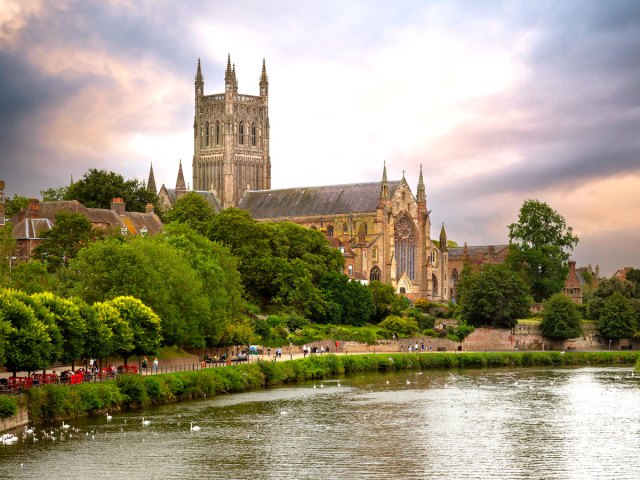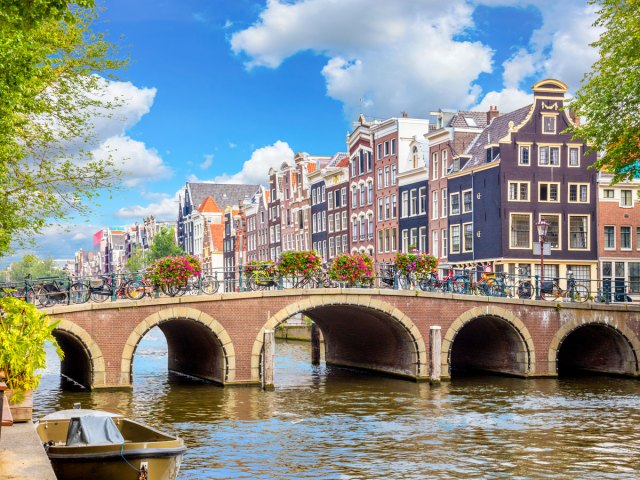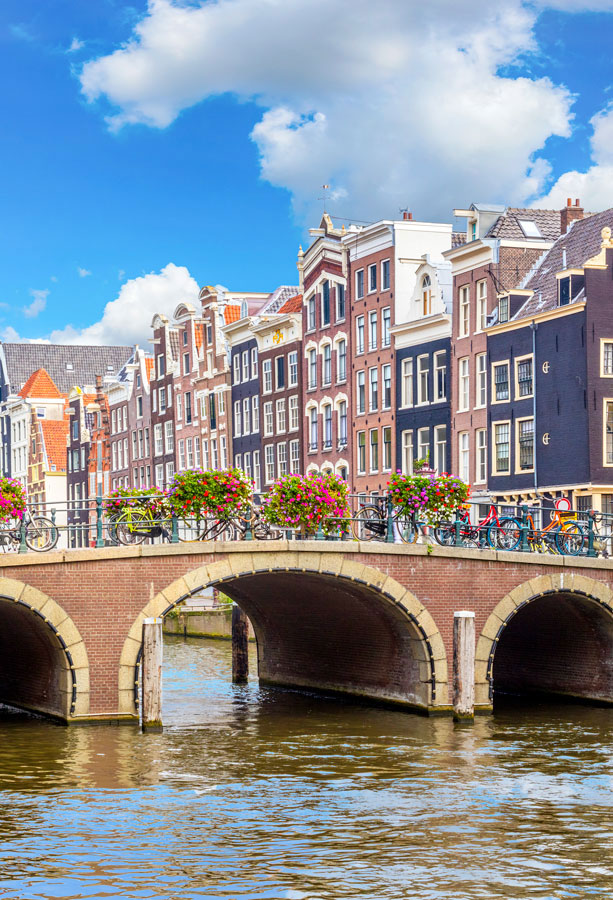Have you ever wondered why it’s called a baked Alaska and not a Baked New York? Or why Hollandaise sauce is named after Holland when it originated in France? When food is named after a specific place, the reasoning behind the name isn’t always straightforward. Read on to discover the unique origin stories of five popular foods named after places around the world.
Baked Alaska

Before it was renamed for America’s northernmost state, the baked Alaska was inspired by another cold-weather destination. The dessert’s first iteration was a similar French confection called omelette Norwegge, or Norway omelet. Consisting of layers of cake, ice cream, and toasted meringue, baked Alaska must be baked in the oven before being served, thus earning the other half of its appellation.
When French pastry chef Charles Ranhofer created a variation of omelette Norwegge at New York’s Delmonico’s in 1867, he originally called it “Alaska, Florida.” Ranhofer often inserted social and political commentary into the names of his desserts, and given the U.S.’s recent purchase of Alaska for $7.2 million dollars — a controversial subject at the time — the name of his new dessert was intended to draw attention. It was also a nod to the variation in temperatures between the cold ice cream (Alaska) and the toasted meringue (Florida). In the 1880s British journalist George Sala coined the term “baked Alaska,” and the name stuck.
Boston Baked Beans

Although baked beans are Boston’s signature dish, they weren’t invented in the Massachusetts capital. Similar versions can be found around the world, from French cassoulet to Portuguese feijoada. In the U.S., the dish dates back to pre-colonial America, when Native Americans cooked beans in earthenware pots. They later taught the technique to the Pilgrims, who borrowed the slow-cook method as a way to avoid working during the Sabbath.
However, Boston did put its own spin on the ubiquitous dish. During the 17th and 18th centuries, the port city was a key hub in the rum trade, with ships carrying molasses between the Caribbean, Boston, and Africa. Molasses was so plentiful that citizens put the sweet ingredient in their slow-cooked beans. It became such a popular dish that Boston became henceforth known as “Beantown” — a nickname that has stuck for centuries.
California Roll

Sit down at any sushi restaurant these days, and you’ll be sure to find a California roll on the menu. The combination of imitation crab meat, avocado, and cucumber has proven popular since its creation. But before the 1960s, the ubiquitous sushi staple didn’t exist.
There are several competing theories about the roll’s creation. According to one, it was invented in the 1960s by Ichiro Mashita, a sushi chef who worked in Los Angeles’ Little Tokyo. Another gives credit to Hidekazu Tojo, who studied culinary arts in Japan and moved to Vancouver, British Columbia, in 1971. The chef took the principles of sushi from Japan and tweaked them slightly for Western palates, which were not used to raw fish. This also included flipping the sushi rice from the outside to the inside to mask the seaweed. Tojo says the name “California roll” came from the out-of-towners, many from Los Angeles, who gave the roll rave reviews that led to its surging popularity in the late 1970s.
Worcestershire Sauce

Not only does Worcestershire Sauce bring loads of umami flavor to drinks, marinades, and salad dressings, but it is also the secret ingredient to beloved dishes like the Ceasar salad, shrimp cocktail, and bloody mary. But how did this fish-flavored, brown sauce become the powerhouse ingredient it is today?
Its origin story is an accidental one. After Lord Sandys of Worcester, England, sailed home from India in 1835, he missed Indian cuisine. He tasked two chemists, John Lea and William Perrins, to recreate a particular favorite sauce from his travels. Lea and Perrins concocted a mixture of fish and vegetables that smelled so terrible they had to move it to the basement — where they promptly forgot about it.
After two years of fermentation, the pair remembered the basement sauce and discovered that it had turned out quite tasty. They began to bottle the sauce up and named it after their hometown, Worcester, England. Though there are many other variations today, Lee & Perrins Worcestershire Sauce remains the original version of the famous sauce.
Hollandaise Sauce

It might be named for a region in the Netherlands (aka Holland), but Hollandaise Sauce is very much a French creation. As one of the French mother sauces, Hollandaise is a variation of sauce Isigny, a rich butter and cream sauce named for a town in Normandy.
During World War I, food rationing changed French cuisine. Due to the government’s restriction of cream and milk and the cessation of butter production, sauce Isigny was no longer on the menu. Fortunately, France was able to import butter from Holland, and a new sauce was born. This new variation had no cream — only butter, eggs, and lemon. Today, the rich, buttery sauce is a key ingredient in eggs Benedict, the beloved brunch dish made with English muffins, Canadian bacon, and poached eggs.
More from our network
Daily Passport is part of Inbox Studio, which publishes content that uplifts, informs, and inspires.
















